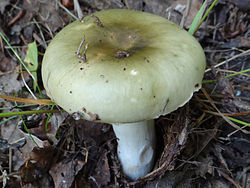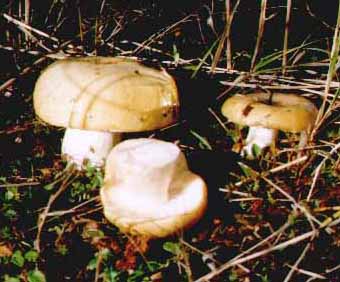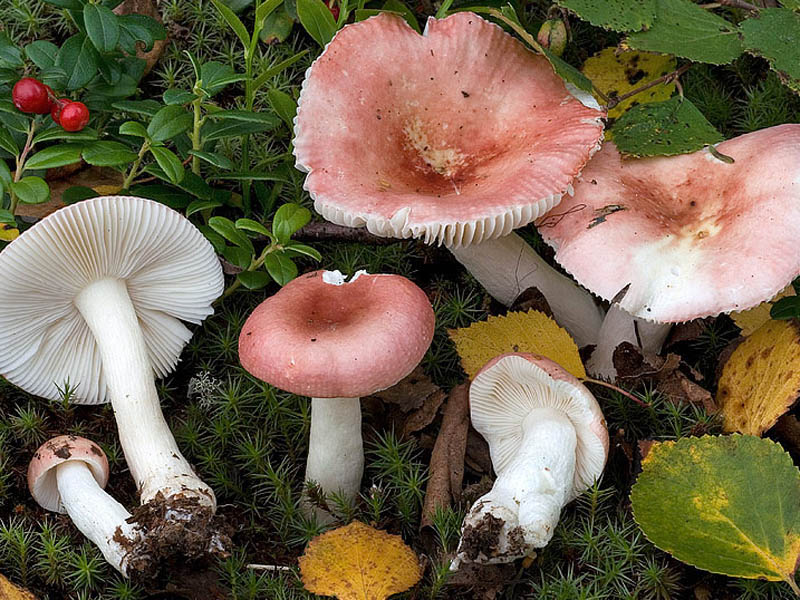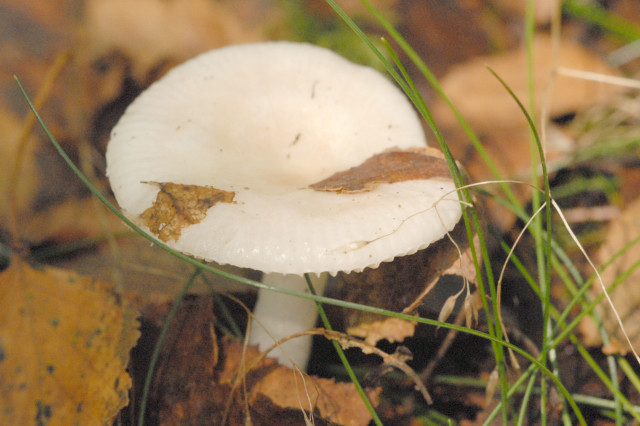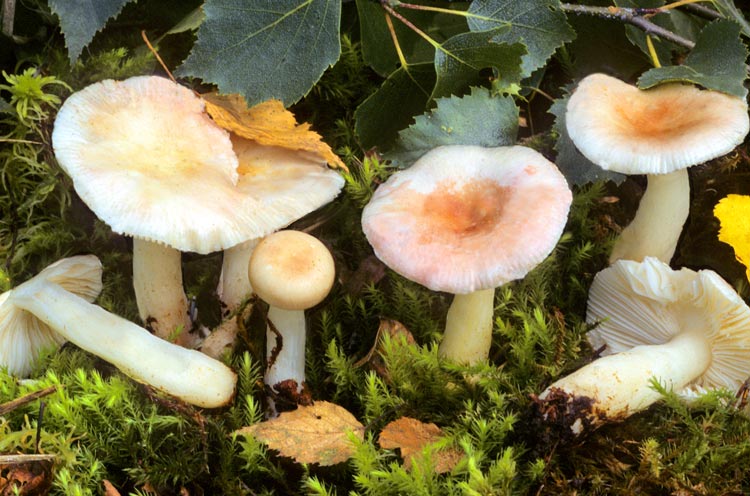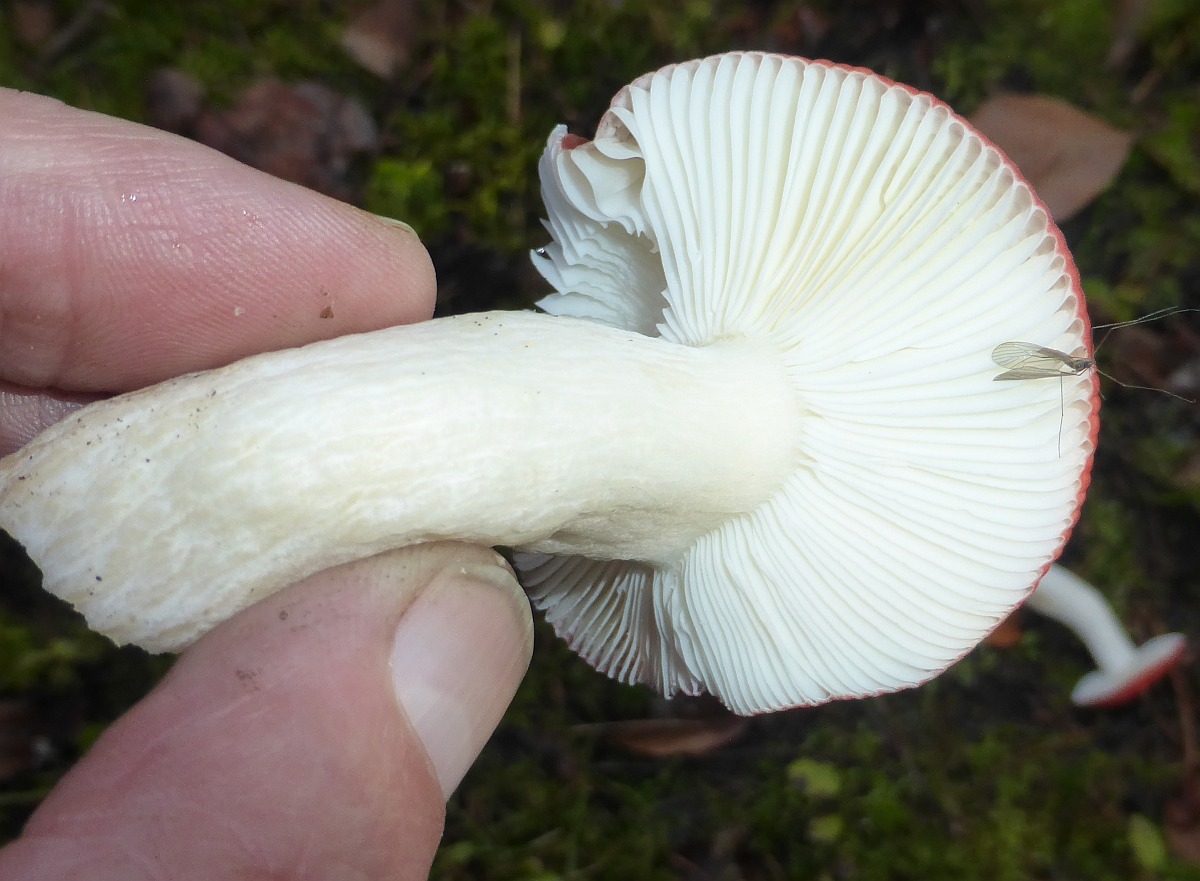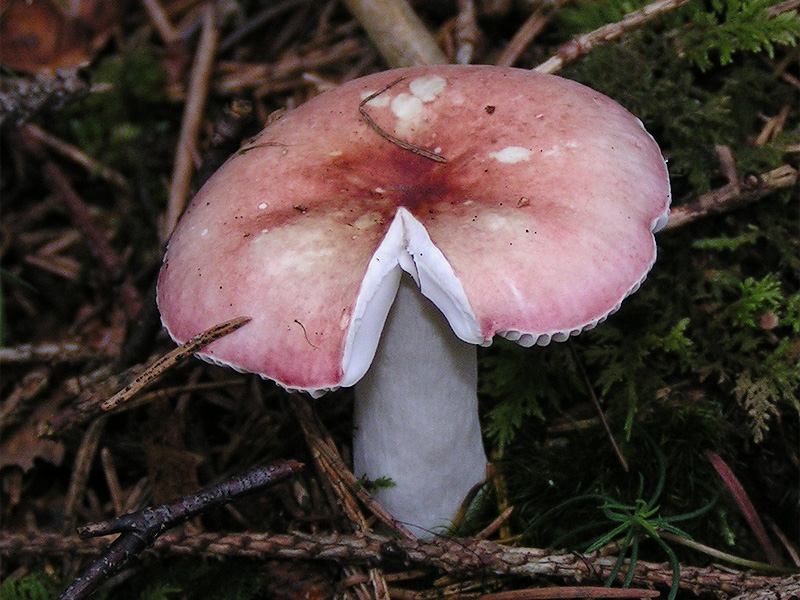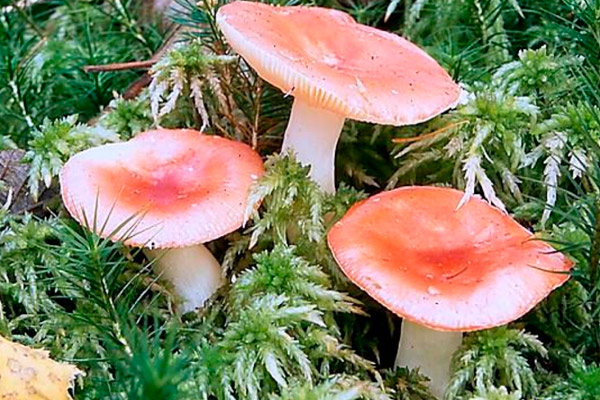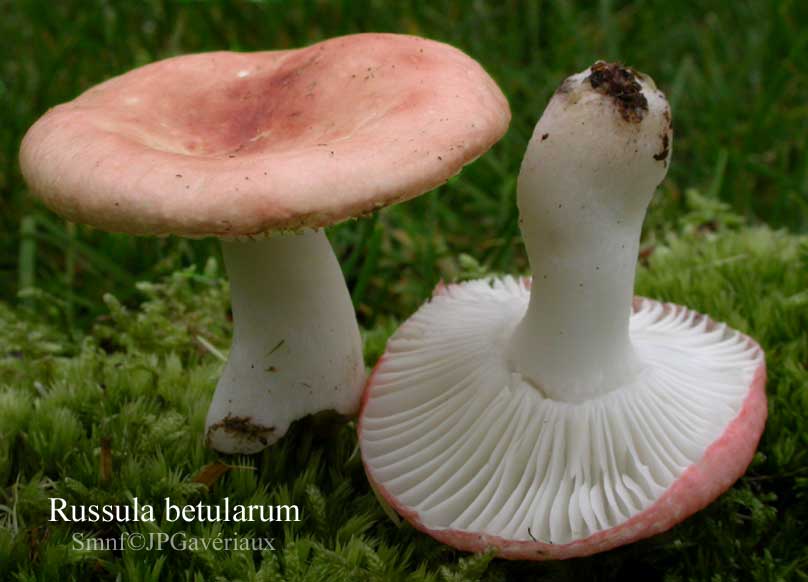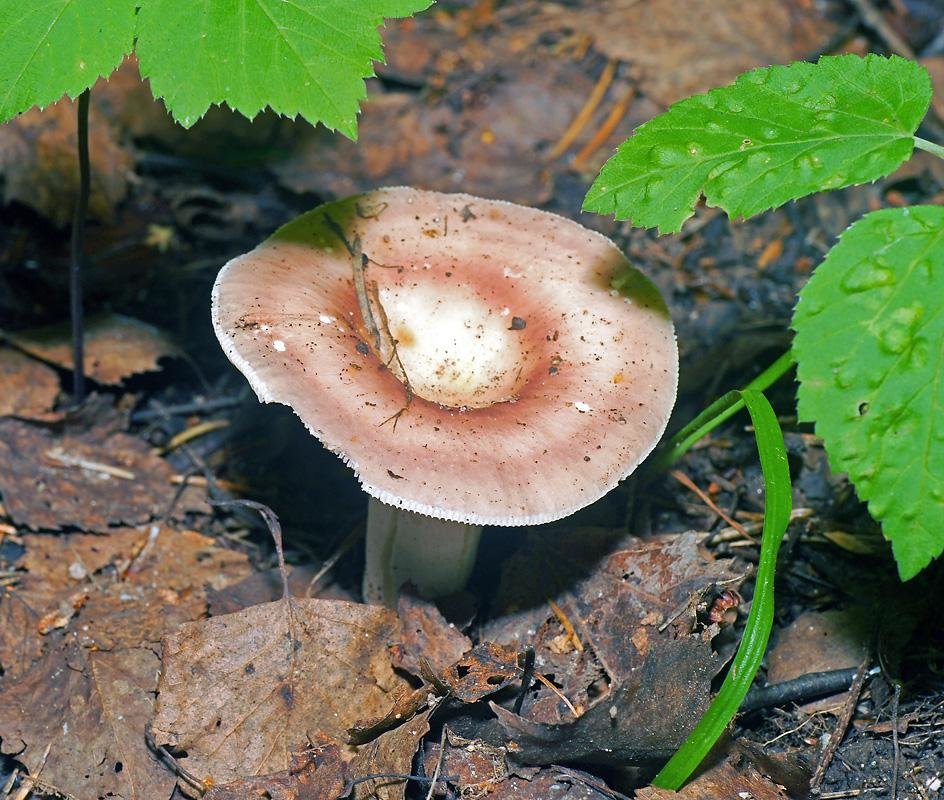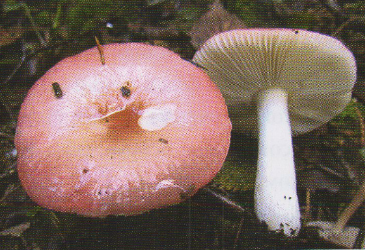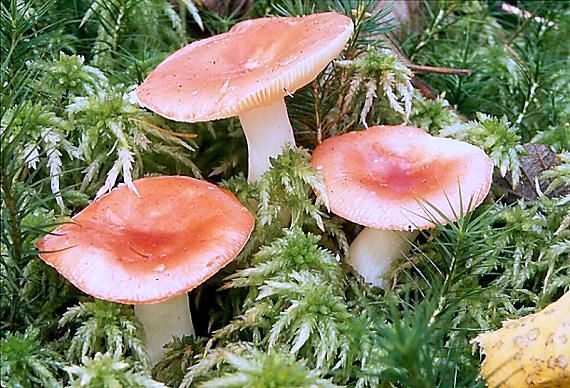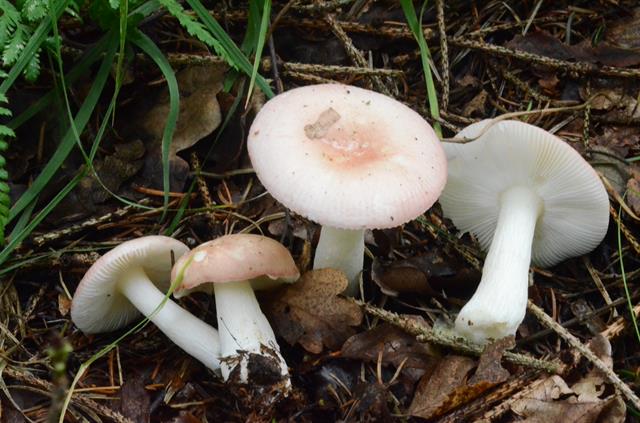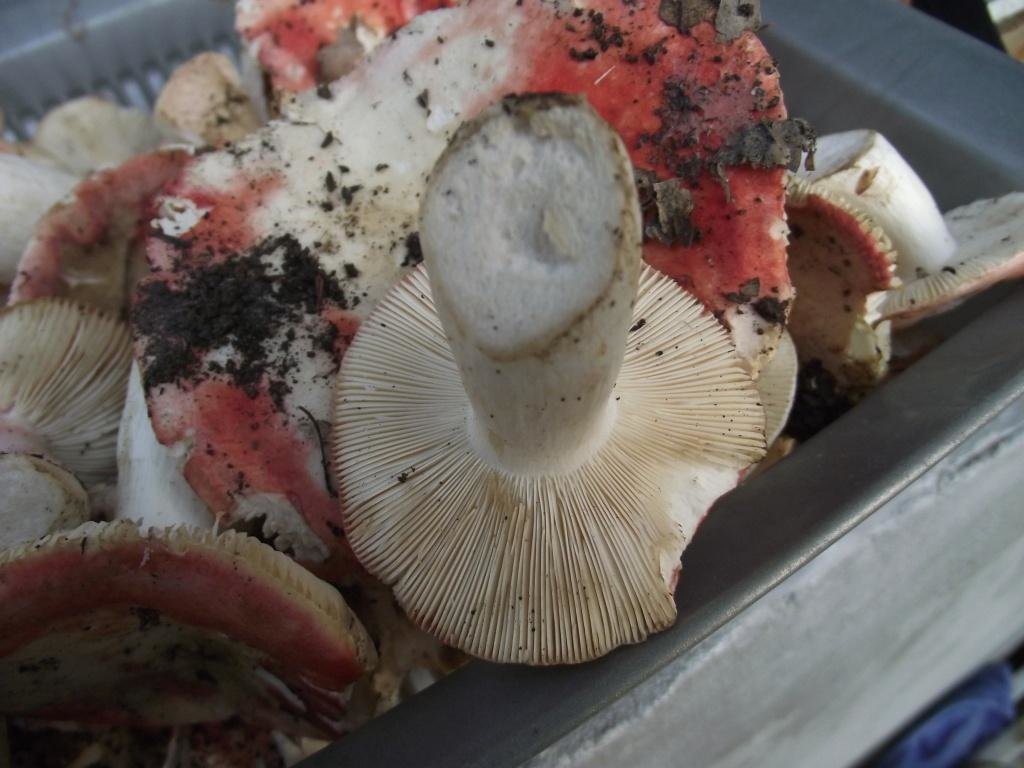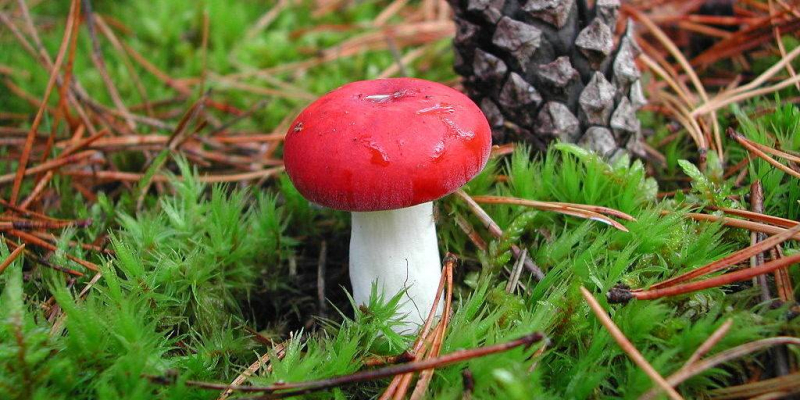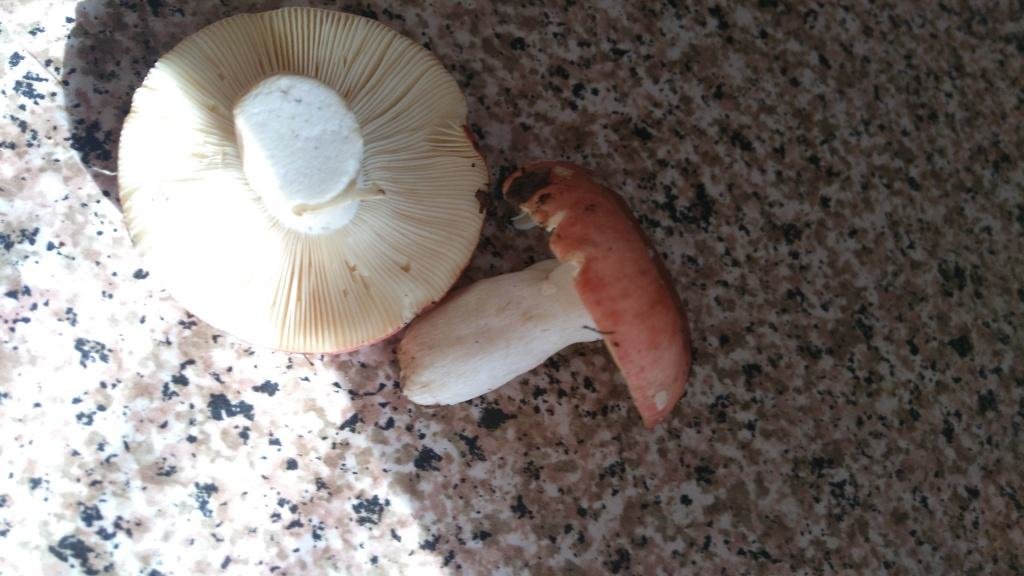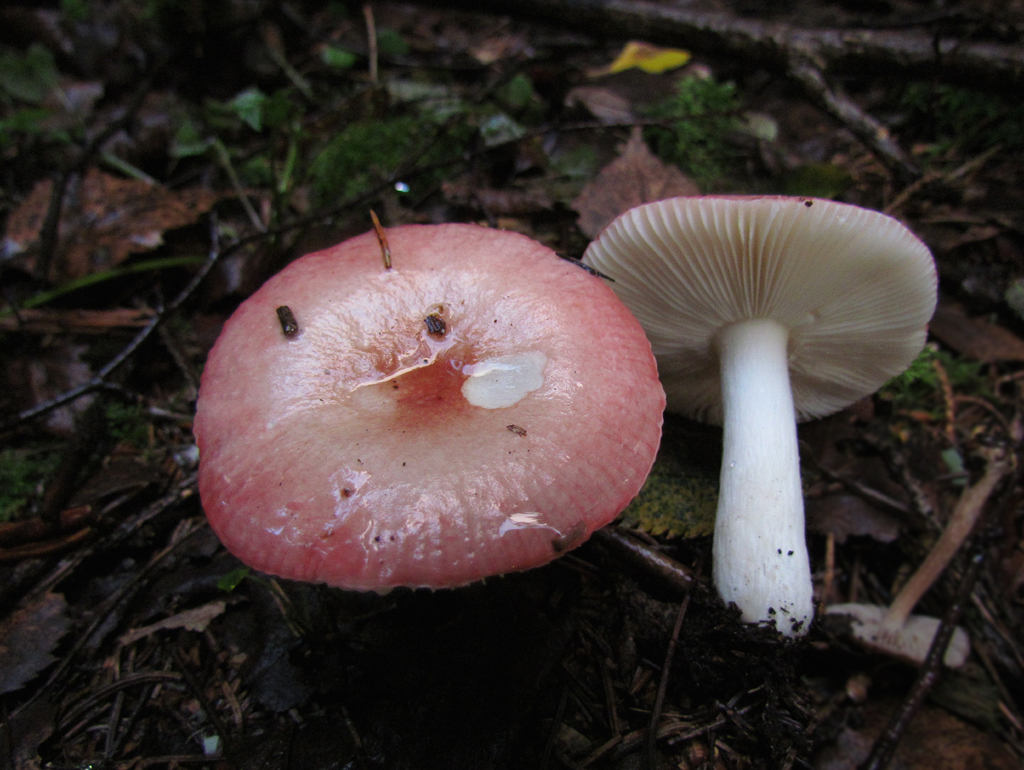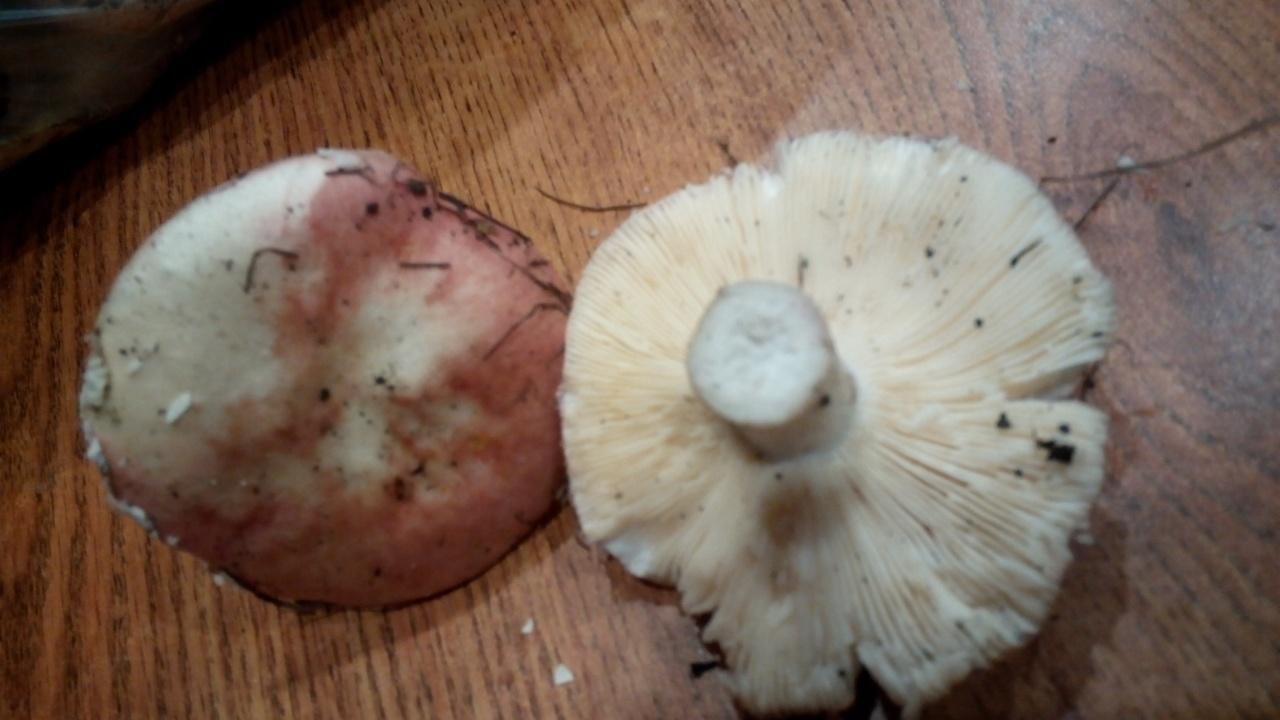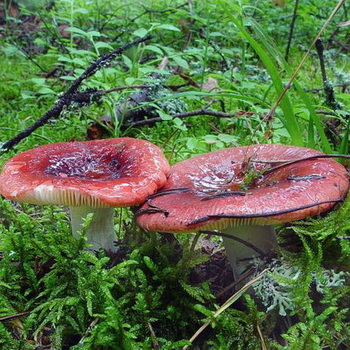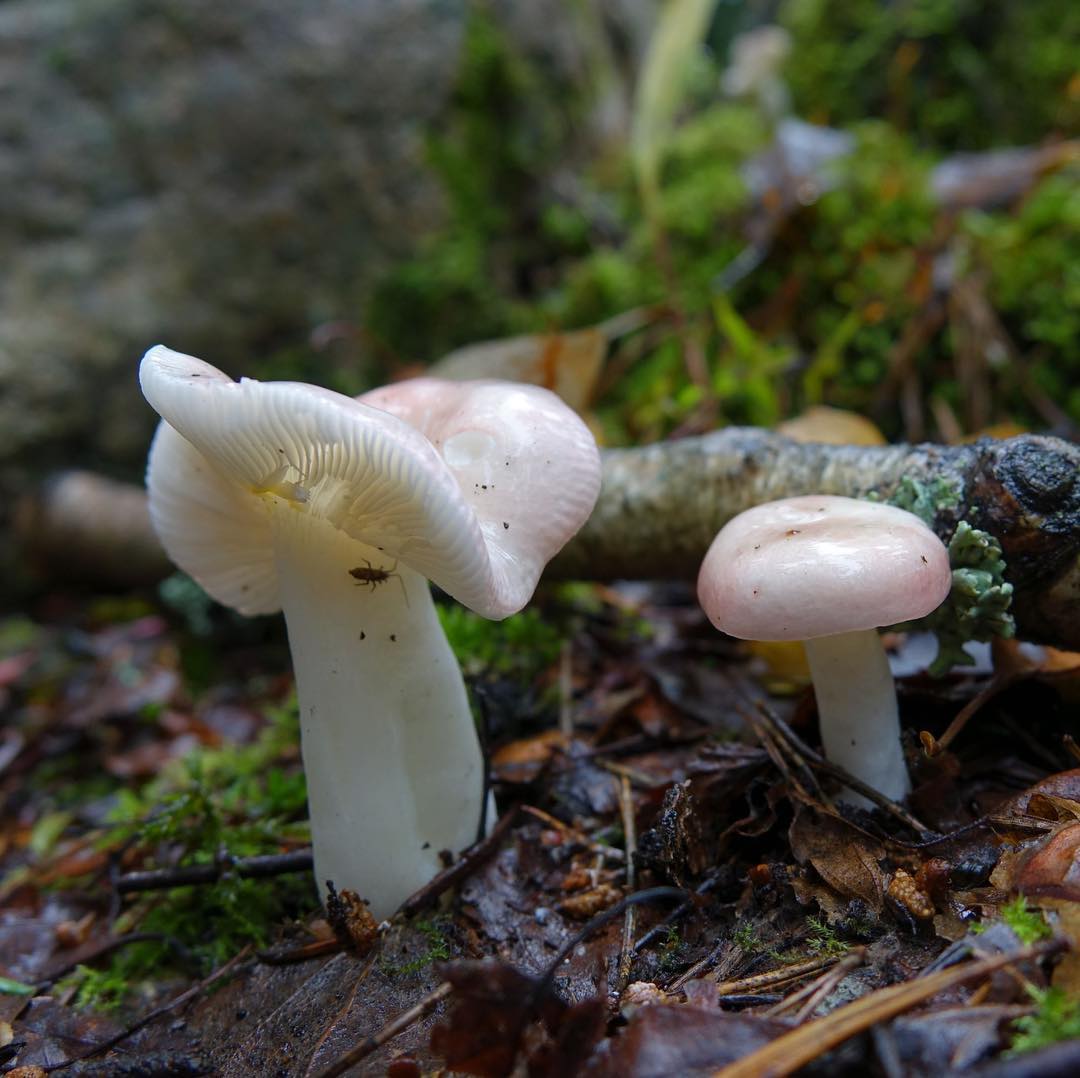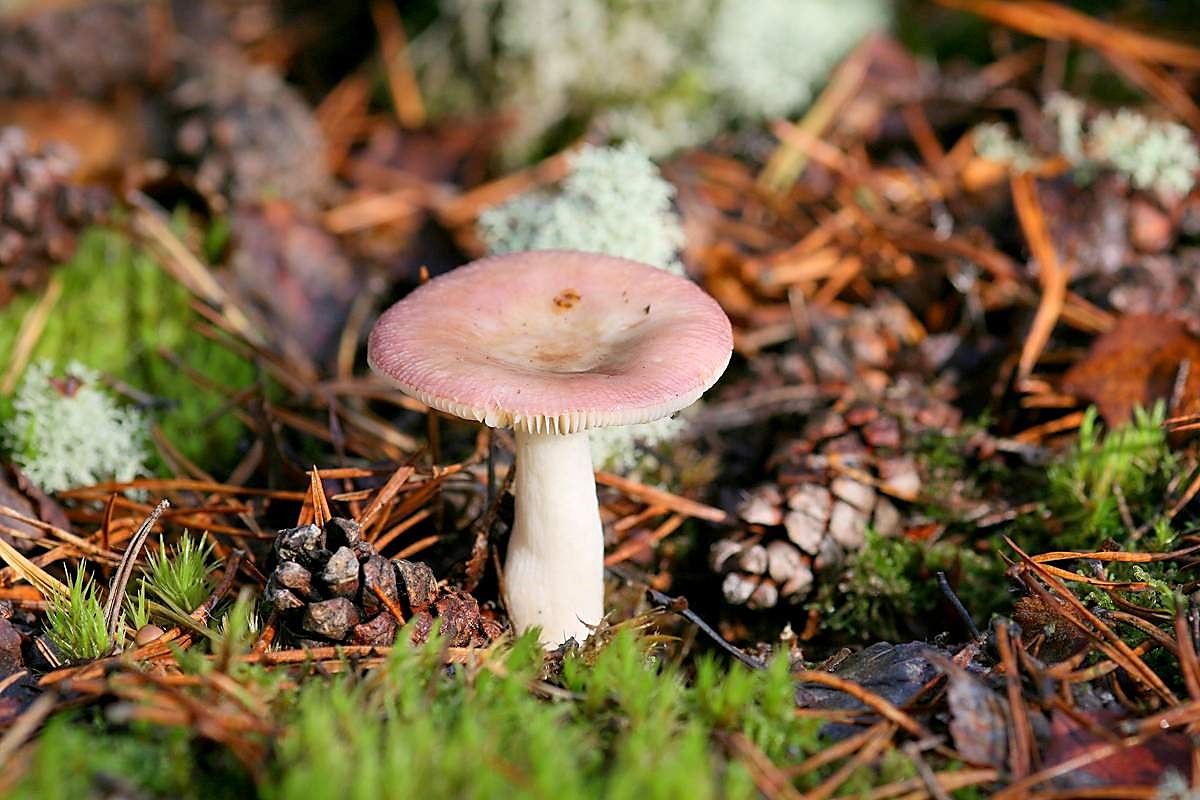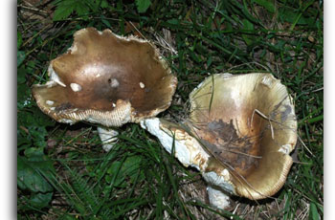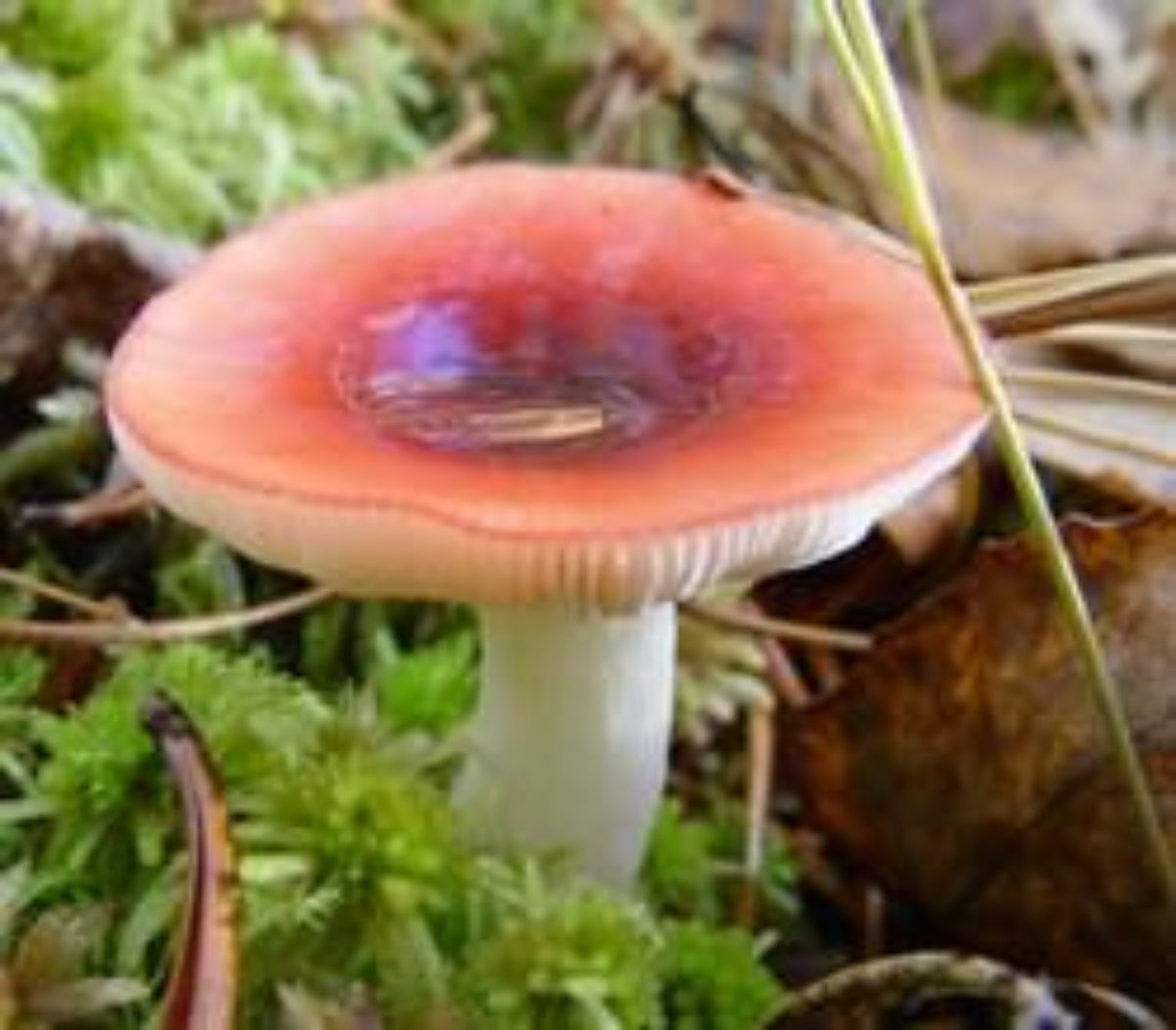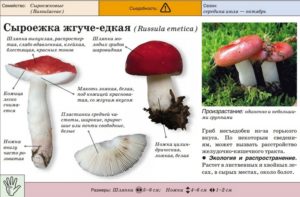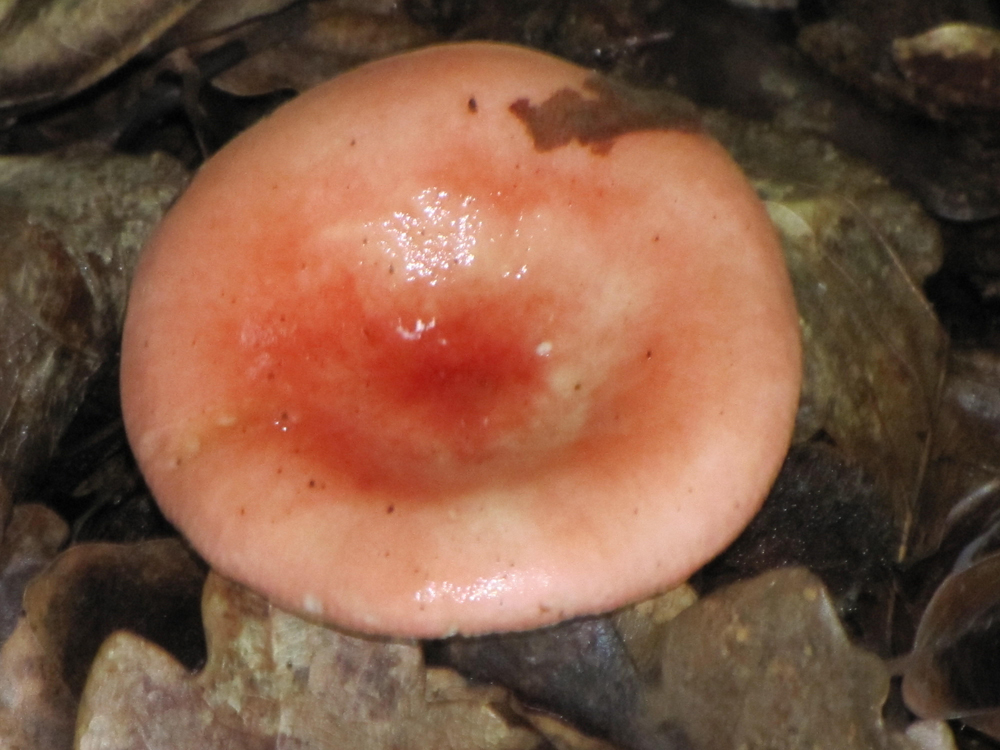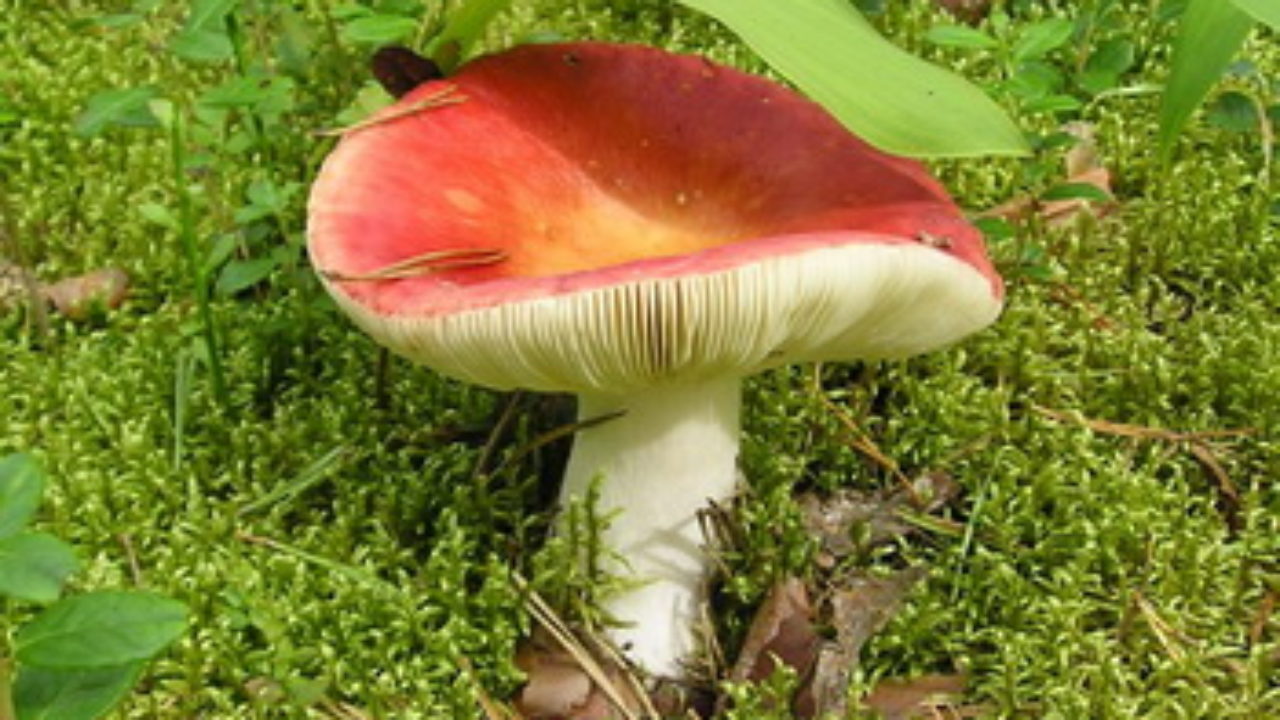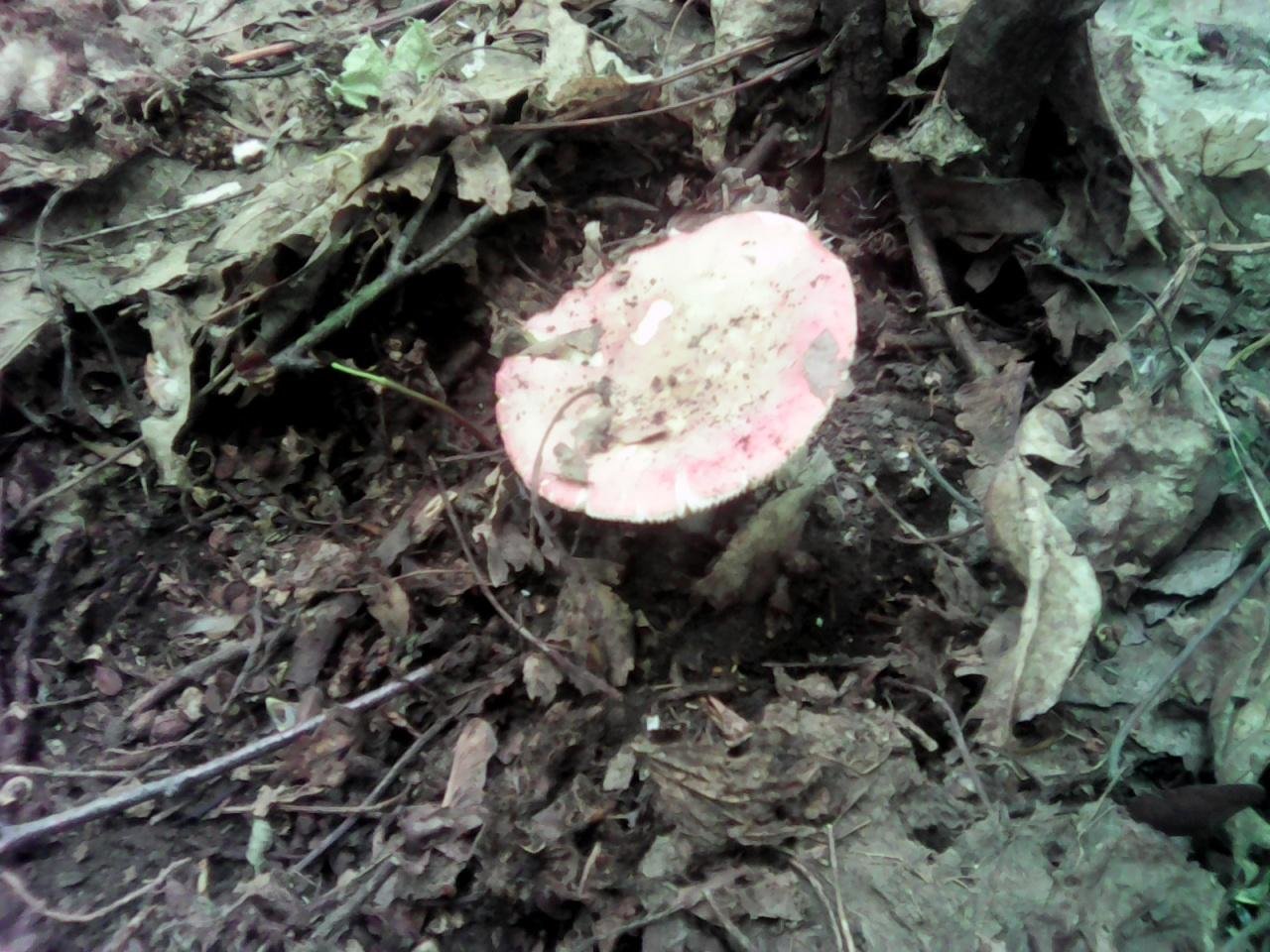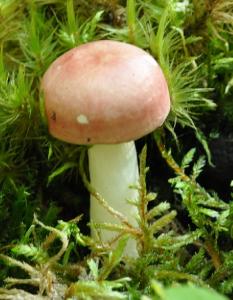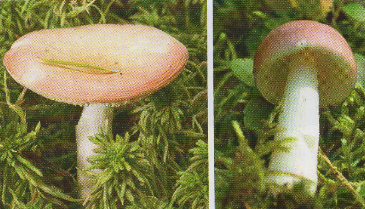Blackening podgruzdok (Russula nigricans)
or
Russula blackening
Blackening podgruzdok - a type of mushroom included in the genus russula, belongs to the russula family.
It has a cap from 5 to 15 centimeters (sometimes larger specimens are found - even up to 25 centimeters in diameter). At first, the cap is whitish in color, but then it becomes dirty grayish, brown with a shade of soot color. There are also brownish specimens with an olive tint. The middle of the cap is darker and the edges are lighter. On the cap there are adhering particles of dirt, earth, forest debris.
The blackening podgruzdok has a smooth, dry cap (sometimes with a slight admixture of mucus). It is usually convex, but then becomes flat and spread. Its center becomes smooth over time. Cracks may form on the cap, which expose a beautiful white flesh.
The plates of the fungus are thick, large, and sparsely located. At first they are white, and then they turn gray or even brownish, with a pinkish tint. There are also atypical black plates.
Leg Loading blackening - up to 10 centimeters. It is strong, cylindrical in shape. As the fungus ages, it becomes a dirty brown color.
The pulp of the mushroom is thick, breaking. Usually white, slowly turns reddish at the site of the incision. It has a pleasant taste, slightly bitter, and a pleasant weak aroma. Ferrous sulfate turns this pulp pink (then it turns green).
Distribution area, growing time
The blackening podgruzdok forms mycelium with hard tree species. Grows in deciduous, mixed forests. Also, the mushroom can often be seen in spruce and deciduous forests. A favorite place of distribution is the temperate zone, as well as the region of Western Siberia. The mushroom is not rare in Western Europe either.
In the forest, it is found in large groups. Begins to bear fruit in mid-summer, and this period ends until winter. According to the observations of mushroom pickers, it is found in such a northern region as the Karelian Isthmus, at the end of the forest it is not uncommon in the Leningrad region.
Mushroom twins
- Podgruzdok white and black (Russula albonigra). He has thick and falling plates, as well as a whitish hat, a grayish tint. The pulp of such a mushroom can turn black almost immediately. Redness is not visible in such mushrooms. In autumn, in birch and aspen forests, it is quite rare.
- Lamellar podgruzdok (Russula densifolia). It is distinguished by a brownish-brown and even brownish cap with a black tint. The plates of such a cap are very small, and the mushroom itself is smaller. The pulp first turns reddish, but then slowly turns black. In autumn, in coniferous and mixed forests, it is quite rare.
- The podgruzdok is black. When broken or cut, the flesh of this mushroom turns brown. But it has almost no dark, almost black shades. This mushroom is an inhabitant of coniferous forests.
These types of mushroom, as well as Podgruzdok blackening itself, form a separate group of mushrooms. They differ from others in that their flesh acquires a characteristic black color. Old mushrooms of this group are rather tough, and some of them can have both white and brown shades.
Is this mushroom edible
Blackening podgruzdok belongs to the fourth category of mushrooms. It can be eaten fresh (after boiling thoroughly for at least 20 minutes), as well as salted. In salty form, it quickly takes on a black tint. You need to collect only young mushrooms, since the old ones are quite tough. Moreover, they are almost always wormy. However, Western researchers consider this mushroom to be inedible.
Video about the blackening Podgruzdok mushroom:
additional information
The fungus can grow in the substrate. Some old specimens of the fungus can come to the surface, this breaks the soil layer.The fungus can often be wormy. Another characteristic feature of the fungus is that it decomposes slowly in natural conditions. During decomposition, the mushroom turns black. Dried mushrooms persist for quite a long time, up to the next year.
Birch russula (Russula betularum)
Other names:
Russula emetica
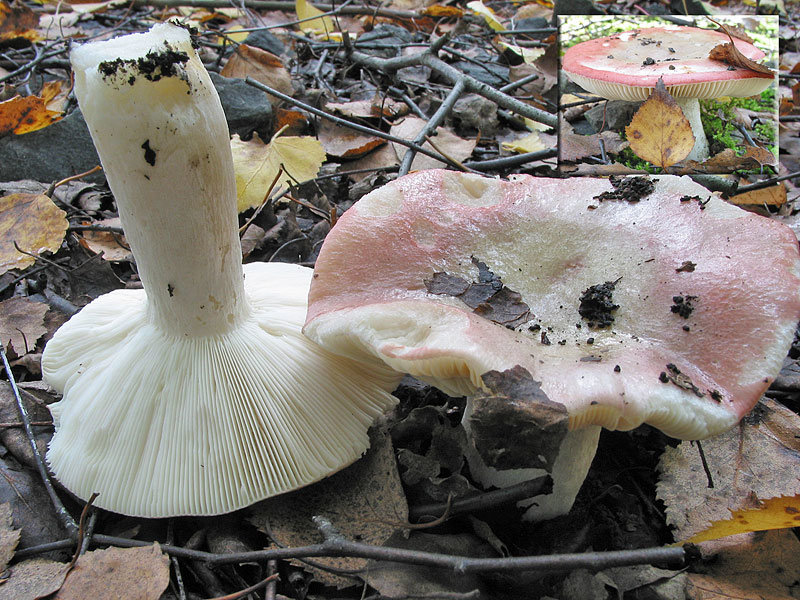
Birch russula (Russula emetica) is a mushroom belonging to the russula family and russula genus.
External description
Birch russula (Russula emetica) is a fleshy fruiting body, consisting of a cap and a leg, the flesh of which is white and very fragile. At high humidity, it changes its color to grayish, has a faint smell and a pungent taste.
The head of the mushroom reaches 2-5 cm in diameter, is characterized by a large thickness, but at the same time it is very fragile. In immature fruiting bodies, it is flattened and has wavy edges. As the mushroom matures, it becomes slightly depressed. Its color can be very varied, from deep red to copper. True, more often the hat of birch russules is lilac-pink, with a yellowish tint in the center. At high air humidity, it can become mottled, changing its color to cream. The top skin is very easy to remove from the cap.
The leg of birch russula is initially characterized by a high density, but in wet weather it becomes very brittle and becomes very wet. Its thickness along its entire length is approximately the same, but sometimes it is thinner at the top. The leg of birch russula has a yellowish or white color, wrinkled, inside it is often empty (especially in ripe fruit bodies).
The fungus hymenophore is lamellar, consists of thin, rare and fragile plates, slightly growing together with the surface of the leg. Are white and have jagged edges. The spore powder is also white, consists of small ovoid particles that form an incomplete network.
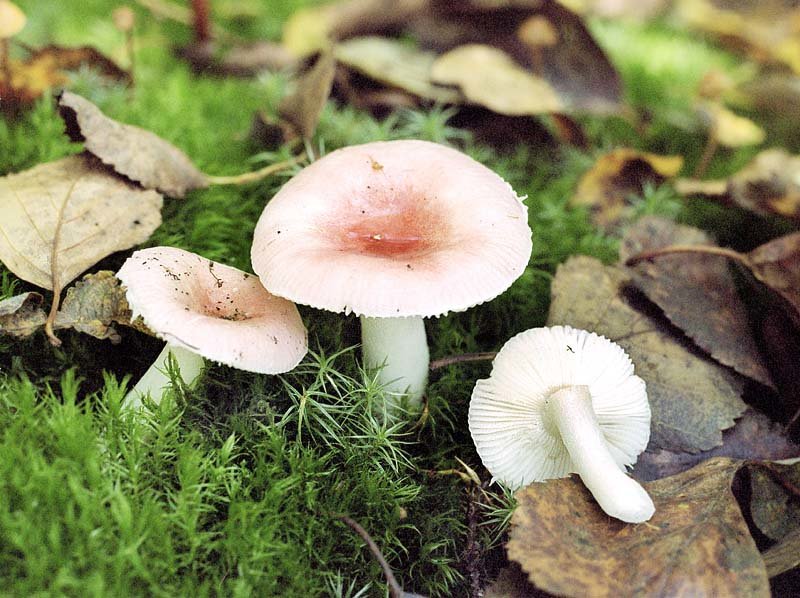
Season and habitat of the mushroom
The described species is widespread in Northern Europe. Birch russula got their name for their growth in birch forests. In addition, mushrooms of this species can also be found in mixed coniferous-deciduous forests, where many birches grow. Birch russula like to grow in humid places, sometimes found in swampy areas, on sphagnum. The birch russula mushroom is widespread in Russia, Belarus, Great Britain, European countries, Ukraine, Scandinavia. Active fruiting begins in mid-summer and continues until the end of the first half of autumn.
Edibility
Birch russula (Russula betularum) belongs to the category of conditionally edible mushrooms, but some mycologists classify it as inedible. Fresh consumption of this type of mushroom can lead to mild gastrointestinal poisoning. True, this effect is caused by the use of the fruiting bodies of the fungus together with the upper film, which contains toxic substances. If you remove it before eating mushrooms, then they will not be poisoned.
Simple and delicious recipes
Russula is a versatile mushroom. This species can be fried, salted, pickled, frozen for the winter, and even fermented. But drying is undesirable, since some varieties can be bitter.
If you brought russula from the forest - how to cook them, how much to cook? It's simple. To remove bitterness, forest gifts need to be soaked for 10-12 hours in cold water, periodically changing it. After they are rinsed, washed again and boiled for 30 minutes in salted water. Once these processes are complete, the mushrooms can be prepared according to the recipes. The water in which the russula was cooked can no longer be used, all the bitterness has gone into it.
Soup
You will need simple ingredients to make a fragrant, rich mushroom soup. The whole process will take 20 minutes.
Components:
- russula - 400 g;
- potatoes - 4 pcs.;
- onion - 1 pc.;
- carrots - 1 pc.;
- vermicelli - 200 g;
- greens, salt.
How to cook:
- Wash, peel and slice the fruit.
- Cut clean vegetables into cubes or strips.
- Boil the mushrooms for 15 minutes, drain the water, place the product in a fresh one.
- Add the potatoes and cook for 10 minutes, then add the rest of the vegetables.
- Season the soup with spices, salt, add bay leaf to taste. Cook for another 10 minutes. until complete readiness.
Fried mushrooms with potatoes
Before preparing this dish, it is advisable to peel, soak and boil the fruit bodies (if they taste bitter). Pass the onions in sunflower oil, then add the mushrooms and potatoes, cut into strips, and fry until they acquire a pleasant golden color (10-15 minutes). Then, to taste, you can put sour cream, season with salt, pepper, chopped herbs.
Salting for the winter in banks
Russula can be salted in different ways: hot, cold, stored in barrels, cans, canned for the winter
Pay attention to the hot method - it will save time
Ingredients:
- mushrooms - 1 kg;
- coarse salt - 100 g;
- cherry leaves - 8 pcs.;
- cloves - 5 pcs.;
- black peppercorns - 2-3 pcs.
How to pickle edible russula:
- Rinse them, place them in a container of cold salted water for 3 hours to remove the bitterness.
- Pour water into a saucepan, add salt, bring to a boil. Place the fruits in it, cook for 20 minutes, constantly removing the foam.
- Add spices, cook for another 7 minutes.
- Spread the product in sterile jars, fill with boiling marinade, seal.
Pickling
This method will not take much time, but in winter you will always have a tasty, healthy snack on your table.
Ingredients:
- mushrooms - 2 kg;
- water - 3 l;
- table vinegar - 150 ml;
- onions - 3 heads;
- cloves - 3 pcs.;
- granulated sugar - 1 tbsp. l .;
- salt - 50 g;
- bay leaf - 5 pcs.;
- allspice peas - 5 pcs.
How to pickle, step by step description:
- Boil russula in salted water for 20 minutes, constantly removing the foam.
- As soon as the fruits sink to the bottom, you need to discard them in a colander and cool.
- Prepare the marinade: for this, dissolve spices, salt, sugar, onion chopped into 2 or 4 parts in a liter of water.
- Boil the brine for 10 minutes, add vinegar.
- Arrange the boiled russula in the jars, fill with boiling marinade, seal with lids.
Yellow species of inedible russula
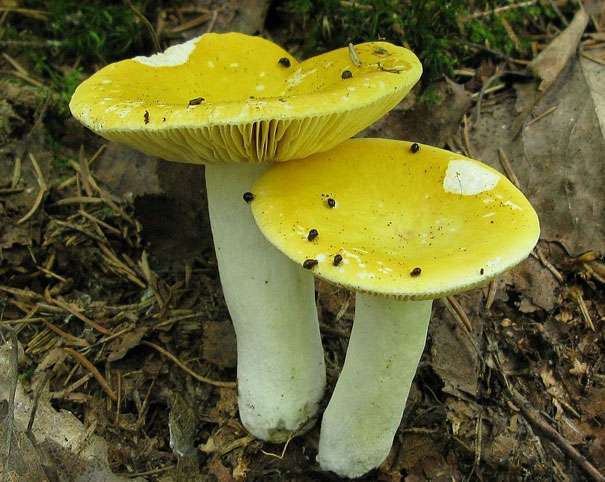
Even after studying edible and
inedible, the mushroom picker can confuse them with a high degree of probability. For example,
ocher russula (R. ochroleuca) with
value (R. Foetens),
as both fungi prefer moist forests. R. Ochroleuca has a fracture of the pulp
it also darkens a little, has no smell, but there is a very pungent aftertaste. From yellow
russula, it differs in color: if the latter has it clean and bright, then in
ocher - dirty yellow.
Valuy
although it is considered a conditionally edible mushroom, most mushroom pickers
ignored, because its pulp becomes brown at the break, moreover, it
It smells unpleasantly rancid, and tastes bitter. Valuey for
use for food must first be soaked for a long time, then cook in
several waters, which not every housewife will decide on.
Golden yellow
russula (R. Risigalina)
although edible, the taste is inexpressive. It is smaller than
yellow, and her spore powder is egg-yellow.
Healing properties of birch russula.
Not so long ago, russules have become very popular due to the fact that they are able to cleanse the intestines and stomach. Russula are rich in vitamins B, C, E and PP. In addition, they are rich in disaccharides, monosaccharides, fatty acids, and dietary fiber. Birch russula also contains phosphorus, potassium, sodium, iron, magnesium and calcium. At the same time russula are low-calorie.
Dried russula retains up to 30% protein. In addition, they contain carbohydrates, fiber, amino acids, and essential oils. The most important thing is lecithin, it prevents the deposition of cholesterol.
Related species.
Brittle russula is a conditionally edible relative of the birch russula. It is a small russula with a variable color. The color of the cap is pink-violet, in places with a gray-green tint.The leg of a brittle russula is cylindrical in shape, thin, white in color with a mealy bloom. The pulp has a strong burning taste.

Brittle russula grow in acidic soils. They can grow in deciduous forests and conifers, they are found under oaks, birches and hornbeams. Fruiting is observed from July to October.
The russula pink is also a conditionally edible species. Its cap has a semi-circular shape, its edges are smooth. The surface of the cap is dry and velvety, and in wet weather a layer of mucus appears. The color of the cap varies from red to dark pink. The leg is thick, cylindrical, rigid. The flesh of the pink russula is dense, but fragile.
The russula pink grows in North America and Eurasia. They are most often found in deciduous forests, but they can also be found in conifers. Beautiful russula grow in mountainous regions. Fruiting occurs from July to October.

